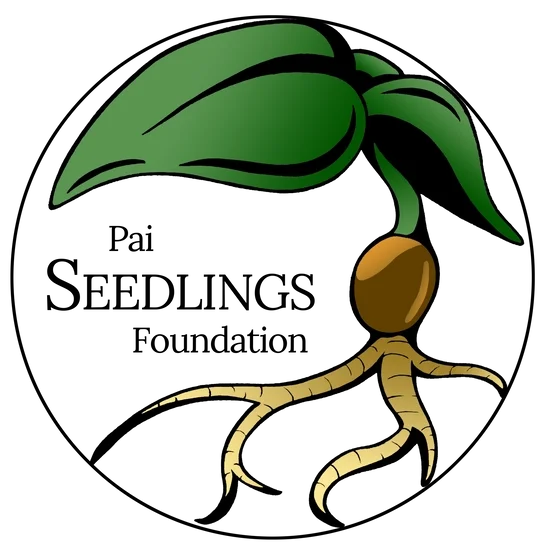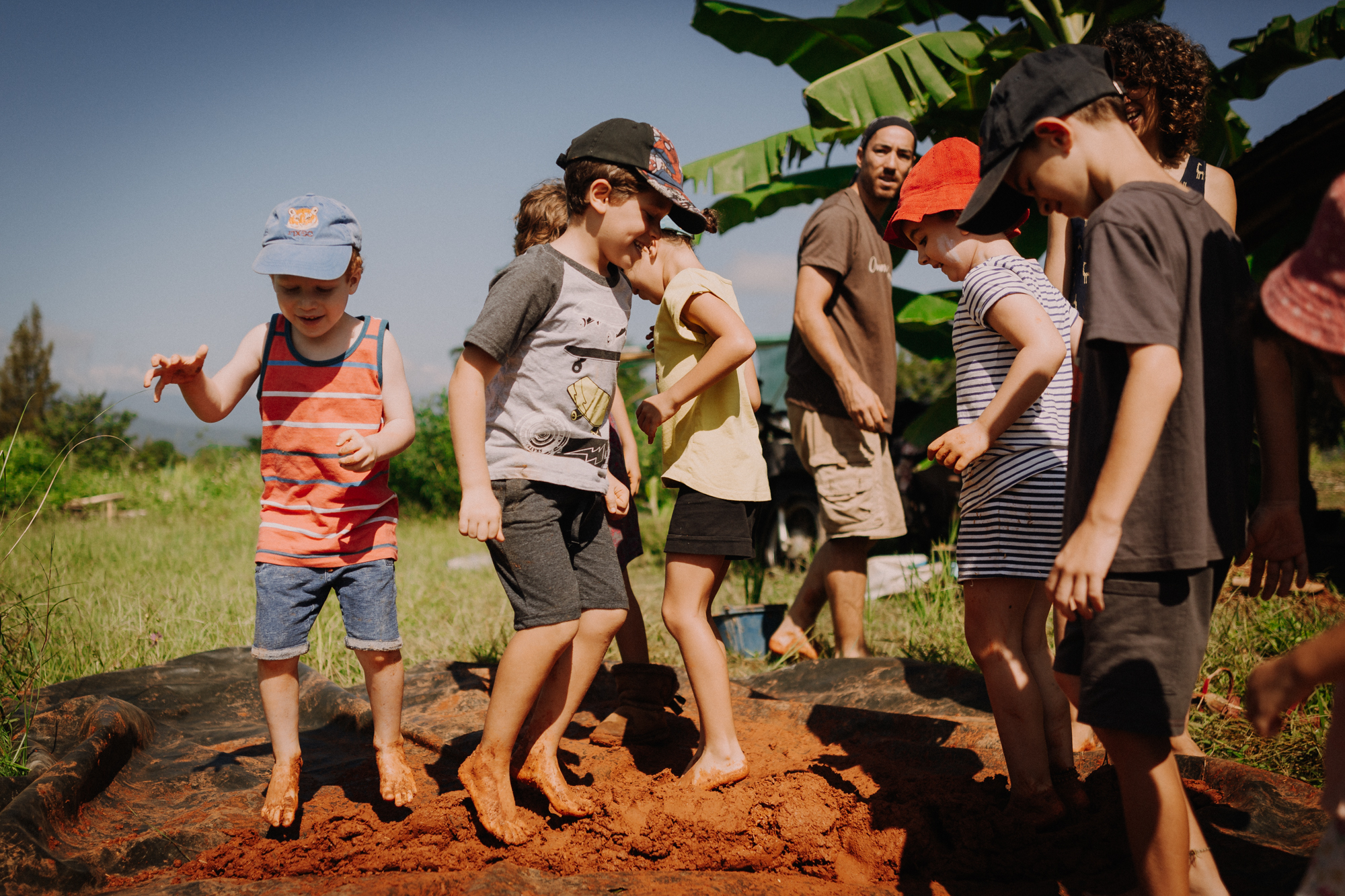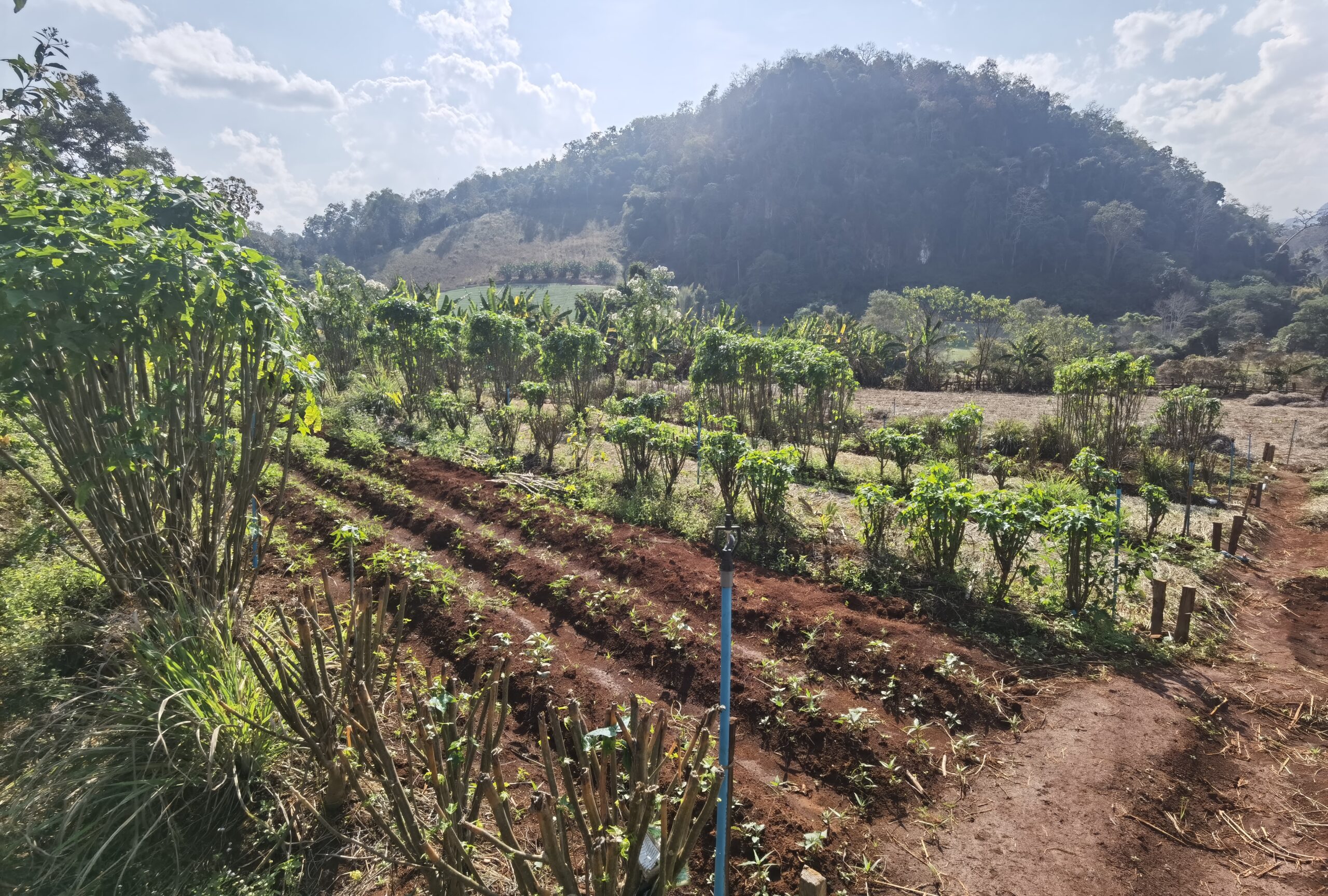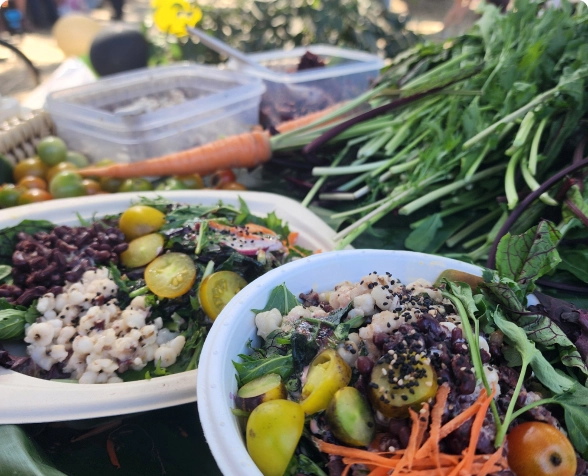Consulting – land restoration and project design
Whether you want to start a vegetable garden, design your house or house garden, plant a food forest or restore an ecosystem, or design a project, we can help.
Your dreams and ideas is where we start: what we propose is a maturation process to turn them into realistic projects to make them happen.
Every project is different in scope, ambition and complexity of implementation. This is why we offer a clear consulting process to make sure that we fully understand your unique context and needs and provide the best solution to make your project come true.
As with any project involving nature, a clear assessment of your land and stakeholders will inform the unique solutions we propose: this is where our unique expertise in ecosystem restoration and project design comes in! If your project involves other stakeholders, a key element to success will be how you address them and integrate them in your project design: to guarantee you’ll sound professional even with investors, we use an inspiring regenerative business model canva to integrate both the economic and the human/landscape regeneration aspects of your project. With this tool in hand, you can be sure to catch your audience attention when the time will come to present your project to potential investors and other stakeholders.
If you like our proposition, then we will establish together a road map to implement it!

Expertise & Skills:
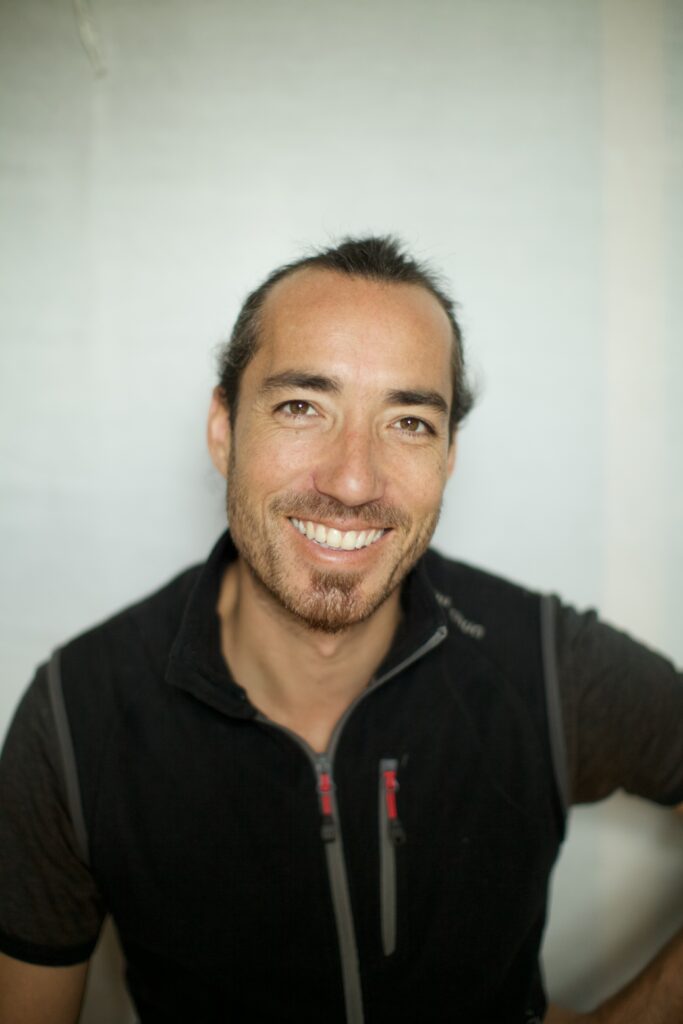
Damien, co-founder of Pai Seedlings Foudnation’s co-founder puts his 10+ years of experience at the service of those who also want to contribute to sholistic regeneration.
Assess before you buy, design before you build, plan before you grow.
Technical
- Permaculture (10 years experience)
- Sustainable Design (PunPun self reliance center, Ajarn Jon Jandai)
- Ecosystem Restoration (Ecosystem Restoration Design School, John D. Liu)
- Soil microbiology, biocomplete composts & amendments, biochar, EM (Soil Food Web School, Dr. Elaine Ingham)
- Natural Construction (built my own bamboo and adobe house)
Business
- Project Design & Management (RMS Business School)
- Regenerative Business Model Canvas (4 retunrs framework)
- Holistic Business Models (Thamturakit Social Enterprise, Ajarn Yaak, Ajarn Naoh)
- Budgeting, accounting, financial reports
- Workspace design on Notion.so
Human
- Coaching (Self Craft Academy)
- The Work That Reconnects (Joanna Macy)
- Cross-cultural teams management (15 years experience)
- Eco-centric Leadership
- Very organized
Step 1 – INITIAL MEETING
Objectives
The goal of this initial meeting is to create a clear understanding of the vision and assess the resources available: what do we have? What do we want?
- What do we want to achieve? What purpose does it serve?
- What is the scale of the work? Size of the land, duration, number of people involved.
- What ressources are available? Human, material, time.
- What are the desired outcomes?
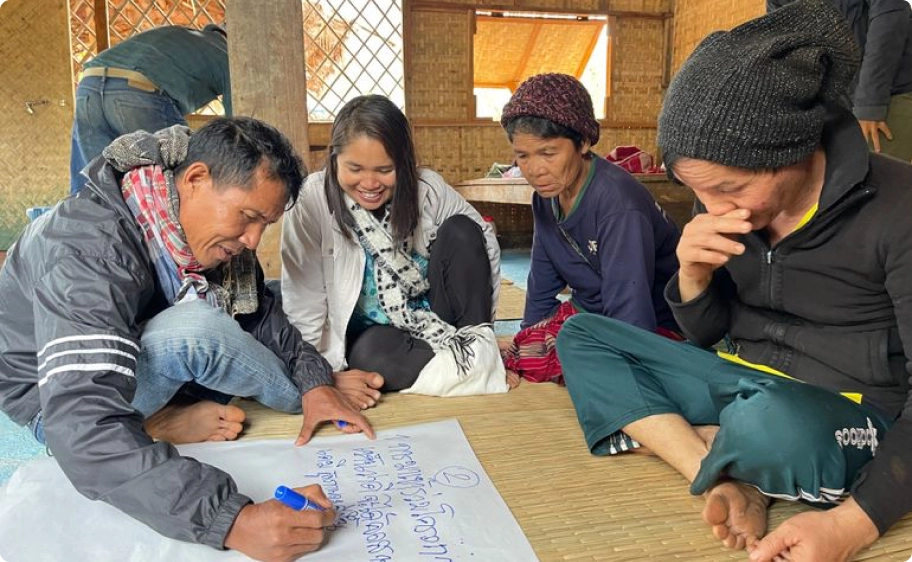
Understanding needs, desired outcomes, crafting vision.
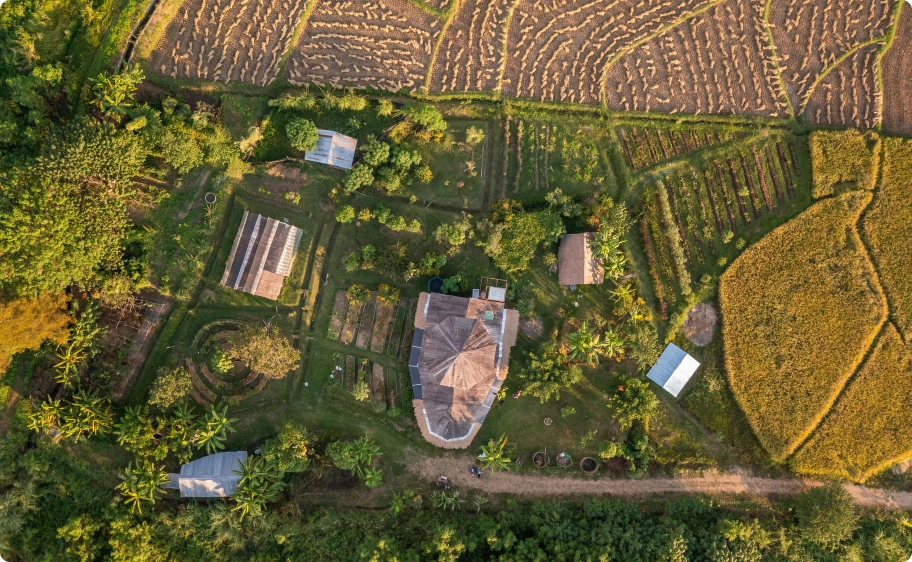
Pai Seedlings Farm – housing, agroforestry, grains & vegetable gardens
Step 2 – SITE ASSESSMENT
Objectives
The goal of the site assessment is to collect the necessary on-site data to prepare the design (step 3).
- Site measurement
- Soil assessment: type of soil, slope, sun exposition, access to water, native grass, nutrient & biological analysis of the soil
- Technical analysis: soil compaction…
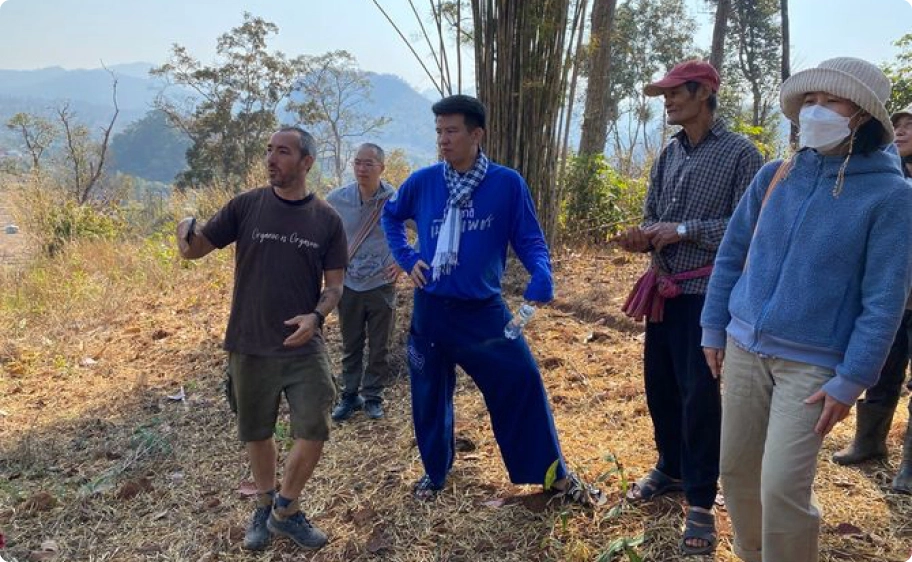
Site assessment in Muang Noi village.
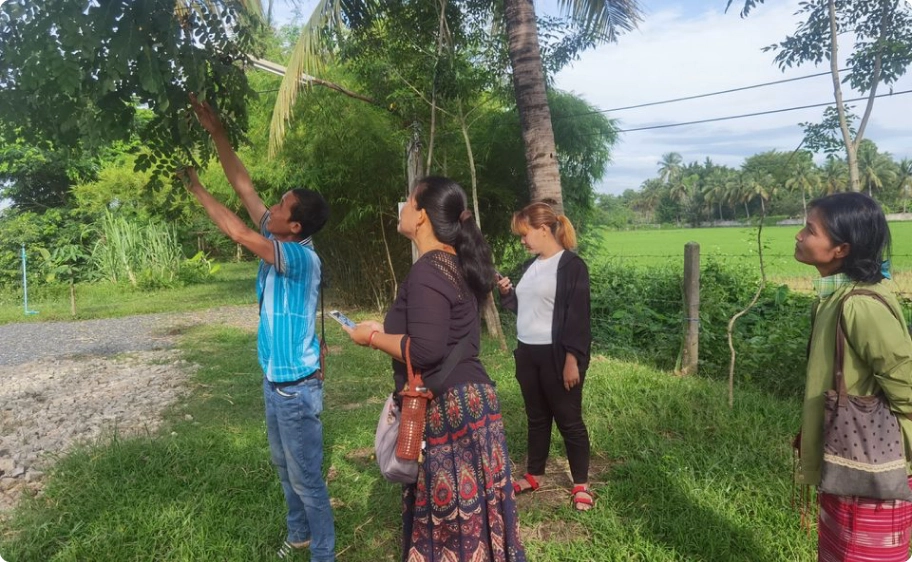
Site assessment
Step 3 – UNIQUE SOLUTION DESIGN
Objectives
The solution design provides detailed professional maps of the solution proposed as well as a list of material needed, a budget and a step by step process to implement the solution.
Site maps
- garden design
- irrigation system design
- Production plan
List of material & human needs
- human resources
- material
- biological plan
Step-by-step Implementation Process
- timeline
- gantt charts
Business Plan & Budget
- regenerative business model canva to integrate both the economic and the landscape regeneration aspects of your project.
Exemples of previous designs
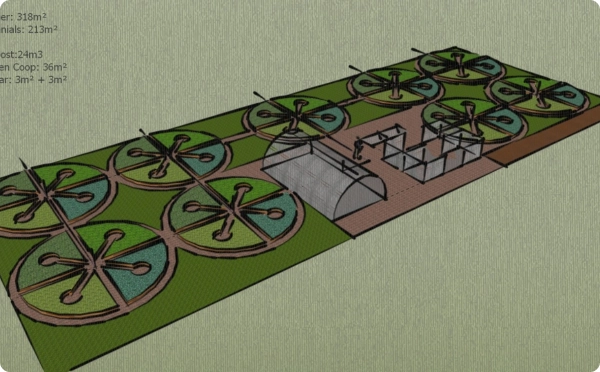
1/2 rai garden design for vegetable production, composting and chicken house.
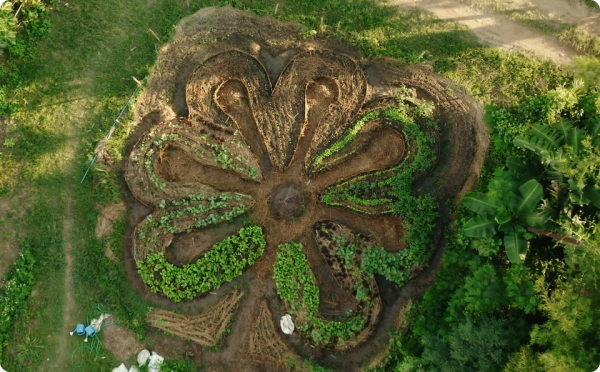
Mandala vegetable garden at Pai Seedlings Farm: beautiful, productive, easy to manage.
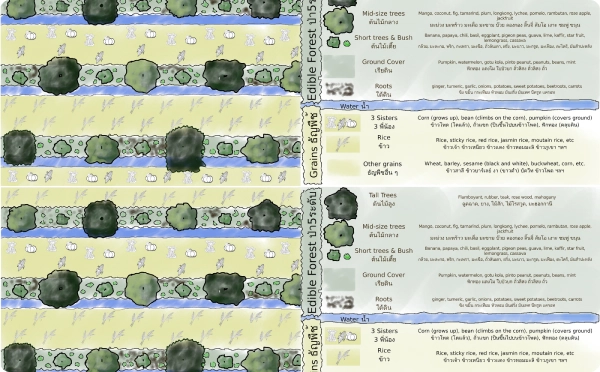
3 rai regenerative agriculture design for karen farmers.
Step 4 – IMPLEMENTATION & TRAINING
Objectives
The solution design (Step 3) will provide a detailed road-map for your team. Depending on their training they might be able to implement it on their own, or with a 1 day training, or with a on-going support to be defined. This Step 4 will define, after consultation with you, how much support you wish to have in the implementation of the solution & the training of your team.
Exemples of previous designs
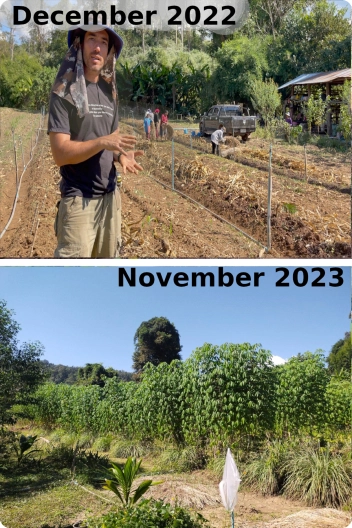
Agricultural land
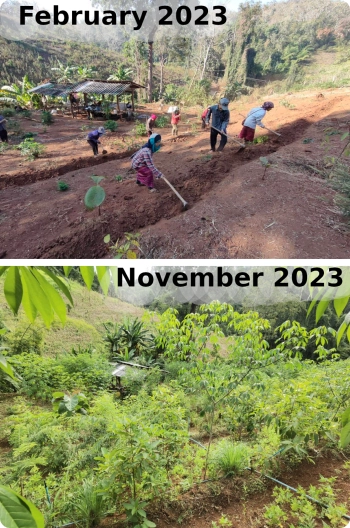
Agroforestry
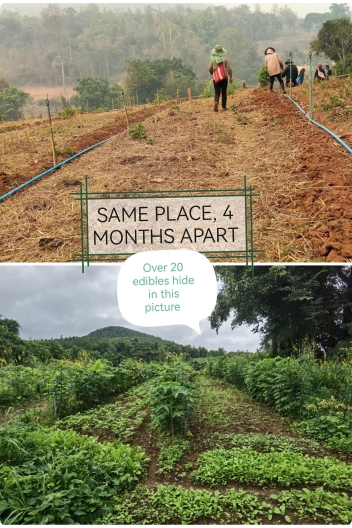
Syntropic design
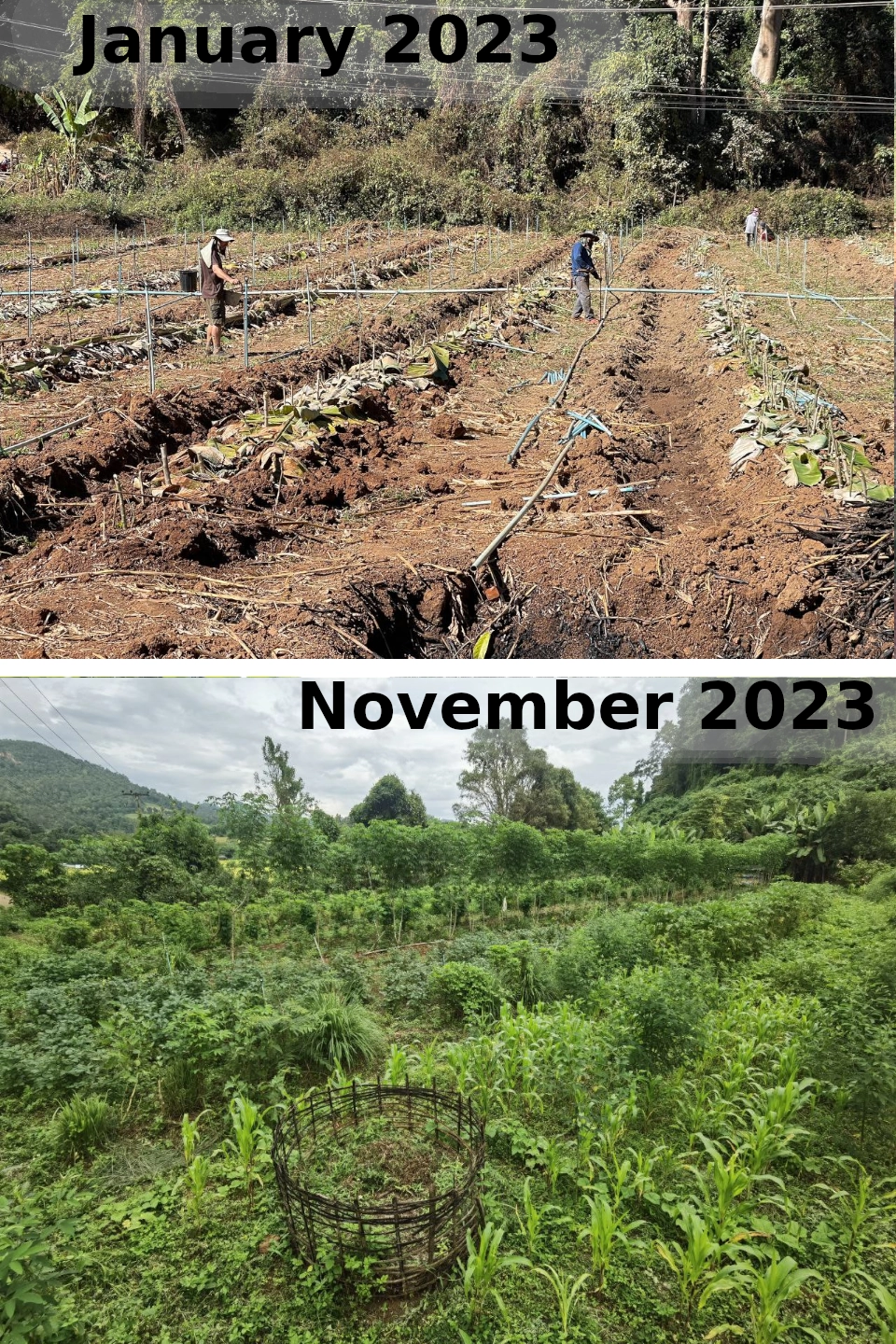
Rice paddies transformation
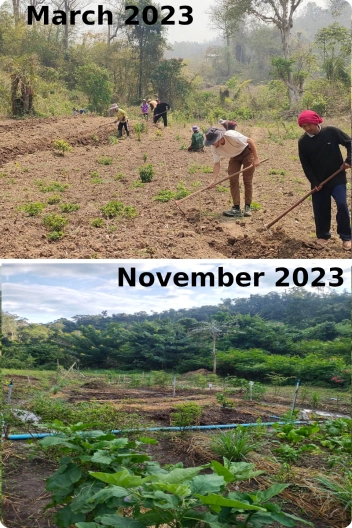
Vegetable garden design
Do you want to support us?
Choose which project you want to support, choose the amount, and become part of the solution!
